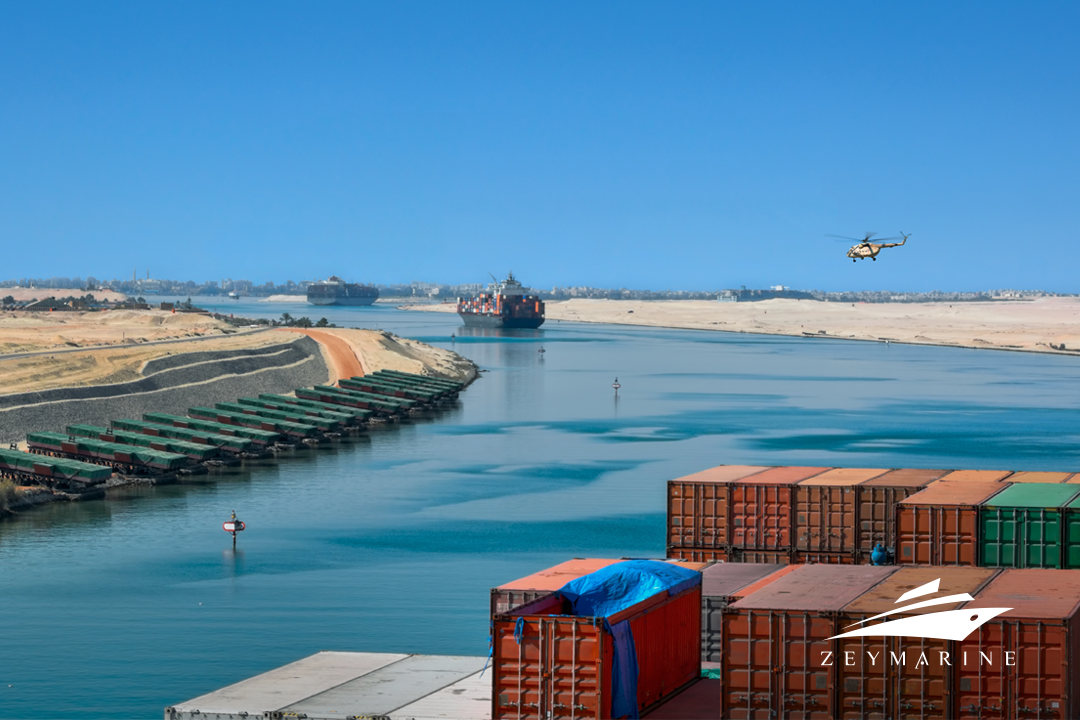Throughout history, the Levant has stood out as a cradle of civilisation and intellect. Nevertheless, the intense acts of violence that have been going on in the region for months make us question our humane feelings. The Red Sea crisis, which is an implicit consequence of the events in Gaza, continues with far-reaching effects. In our article, we address the impact of what has happened so far on maritime shipping.
Initiation of Red Sea Crises
The Houthi movement in Yemen initiated a campaign of armed drone and missile assaults on Israeli and US led ally warships sites in late October, claiming responsibility for persuading the international community to step in and end Israel’s brutality against Palestine in the Gaza Strip.
The Houthis initially targeted Israeli merchant ships traveling through the Red Sea on November 19. They used a helicopter to land and take control of the cargo ship Galaxy Leader. The Red Sea has been avoided by many shipping lines as a result of the Houthi strikes, which have slowed down and raised the cost of shipping.
The Suez Canal at the gateway to the Red Sea had a 42% decrease in monthly transits in the first half of February, while container volume plunged 82% from its peak in 2023, according to the United Nations.
The first merchant marine fatalities and serious injuries resulting from Houthi missile assaults have been documented. Also, over five months after their arrest, the crew of the Galaxy Leader is being held captive in Yemen under the control of rebels.
Current Situation as of April 2024
The Red Sea will always be perilous, and commerce shipping safety will depend more and more on the political will of those who can afford to defend their naval assets.
It also becomes apparent that there aren’t enough capable escorts to guarantee that commerce ships passing by won’t be attacked, regardless of their claimed ownership or flag.
Additionally, the Suez Canal’s earnings, which are crucial to Egypt’s prosperity, are quickly diminishing.
In a late-March update, the world’s largest shipping company, Maersk, of Denmark, reiterated its intention to stay out of the Red Sea going forward. Maersk mentioned assaults on the Rubymar, the first vessel lost to a Houthi attack, and the True Confidence, which resulted in three fatalities and was the Houthis’ first casualties on a commercial vessel.
Solutions for Shipping
Spot prices probably won’t be detained for as long as anticipated, even though the Red Sea issue did not end as expected. Shipping lines with sufficient capacity to handle reroutes along Africa’s Cape of Good Hope, as they were flooded with orders from shipbuilders during the COVID-19 boom.
The principal measure of the degree to which geopolitical risk might drive up spot prices is found in the routes that linked China and the Mediterranean.
In addition, it takes three more days to go from China to Spain, which is home to some of the busiest ports in the Mediterranean, and ships often have delays of 12.6 days at both the origin and the destination. These delays, as late as December, amounted to less than a day on average.
However, the highs of these rates do not compare to those of early to mid-February, when China was getting ready to close down in preparation for the Lunar New Year.
Furthermore, there isn’t much reason to think that rates will climb any further, even though they could stay where they are for a few days or weeks. Instead, rates will probably continue their downward trend that began in March.
Controversies on CO2 Emissions
The Red Sea conflict may result in a significant rise in emissions from container ships that convey commodities from Asia to Europe as a result of shipping companies choosing not to utilize the Suez Canal and instead rerouting their ships around the Cape of Good Hope. They’re accelerating their cruising pace to compensate for the added distance. In doing so, the Financial Times (FT) says that almost ten years of “slow steaming”—a tactic used to reduce CO2 emissions and save fuel costs—can come to an end.
During the rapid increase in bunker prices in the 2000s, shipping lines adopted slow steaming, in which they reduced the commercial speed of their boats to 18 knots or less. The International Energy Agency (IEA) estimates that international shipping contributed 2% of the world’s CO2 emissions in 2022, with an increasing trend.
Shipping experts Sea-Intelligence forecast a 31% to 66% rise in CO2 emissions for routes from Asia to northern Europe or the Mediterranean due to the significant increase in travel time. According to the FT, experts predict that shipping firms will increase their present speeds, which are normally 14 knots, by 1 to 2 knots.
According to calculations made by Sea-Intelligence, shipping companies may choose to increase total shipping capacity by deploying smaller, less fuel-efficient boats, which might lead to even more extreme changes. When combined, larger travel distances, quicker speeds, and smaller ships may result in emissions increases of up to 300%.








